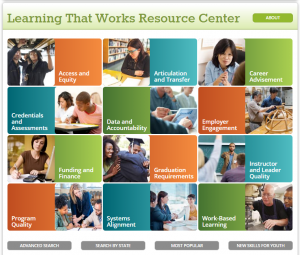As we shared earlier this summer, the House Education and the Workforce Committee approved a bill to reauthorize the Carl D. Perkins Act last month with a 37-0 vote. Prior to and after the introduction of this reauthorization proposal, members from both houses of Congress have continued to introduce legislation to make their priorities for Career Technical Education (CTE) known. Three bills of interest — two in the Senate and one in the House — aim to expand dual credit opportunities for CTE students, increase representation of nontraditional genders in high-wage career pathways, and equip students with the skills they need to be successful in the workforce. While these bills have little chance of advancing further on their own, they do represent areas of interest for members as Perkins reauthorization continues to take shape in Congress.
The Workforce Advance Act (S. 3271)
Senators Michael Bennet (D-CO) and Orrin Hatch (R-UT) in July introduced the Workforce Advance Act, which aims to expand dual and concurrent enrollment opportunities for CTE students across the country. According to Sen. Bennet, dual and concurrent enrollment strategies have “helped more [Colorado students] enroll and do well in college.†The bill would amend the permissible uses of Perkins funds at the state and local levels to include tuition, books, fees and transportation costs for students completing dual or concurrent enrollment courses. The bill would also allow Perkins funds to be used for professional development costs for teachers seeking to obtain credentials needed to teach these courses. At the national level, the Workforce Advance Act would allow the Department of Education to use CTE national activities to research strategies for expanding dual or concurrent enrollment programs in high schools.
The Patsy T. Mink Gender Equity in Education Act of 2016 (S. 3417)
Citing gender disparity in high-wage career pathways, the Patsy T. Mink Gender Equity in Education Act aims to help schools fully implement Title IX, a federal law that prevents sex discrimination in education. The bill, introduced by Senator Mazie Hirono (D-HI), would create an Office for Gender Equity under the Department of Education that would be responsible for helping educational entities in their implementation of Title IX. The Office would provide technical assistance, share best practices, administer a new competitive grant program and more. Under the bill, the Office would also be responsible for training Title IX coordinators annually.
The Four C’s for Careers Act (H.R. 5663)
And in the House, Representative Ryan Costello (R-PA) introduced legislation to promote what he calls the “four C’s CTE providers should promote in their curriculum: critical thinking, communications, collaboration, and creativity.†According to Rep. Costello, these are the skills that industry leaders say will best prepare students for success in the workforce. The bill, a bipartisan piece of legislation co-sponsored by Rep. Dave Loebsack (D-IA), would amend Perkins to promote these four skills through a number of educational strategies, including blended learning, public-private partnerships, and data-driven career counseling. The bill would also encourage participation with local industry leaders by allowing states to use Perkins funds for a needs assessment to identify the strategies, tools and resources needed to promote greater engagement with industry partners.
While Advance CTE has not endorsed these proposals, we will continue to work with these offices to ensure that some of these key concepts find their way into future Perkins legislation. Stay tuned for future updates on all things Perkins as the 114th Congress heads into its final stretch.
Austin Estes, Policy Associate




